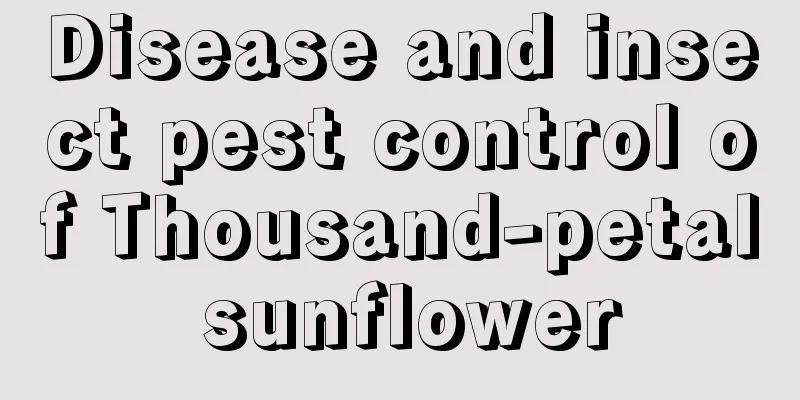Disease and insect pest control of Thousand-petal sunflower

1. About pest controlIn addition to the common wireworms and beetles, the pests that sunflowers may encounter include white grubs, cutworms, grass borers and even sunflower borers. When encountering insect infestation, both the stems, leaves and flowers will be affected. Specific agents can be used to prepare and spray directly on the plants. If the kernel is damaged, wait until the tubular inflorescence withers and then spray the flower disk directly with omethoate. 2. About the prevention and treatment of diseases1. The main diseases of the thousand-petal sunflower are rust and sclerotinia. In addition, parasitism of Orobanche is also a common disease encountered by the thousand-petal sunflower. Let’s talk about rust first. It is caused by fungi and can be encountered from seedlings to maturity. Generally, you can choose to plant plants that are resistant to the disease and prevent and control rust through crop rotation. When symptoms appear, you can choose to apply potassium fertilizer to this flower. If it doesn't work, you can also treat its stems and leaves with 2000 times diluted 25% carboxin. In addition, starting from after flowering, spraying a 150 to 200 times liquid emulsion of high-lipid film about once every 10 days can also prevent and control rust. 2. Sclerotinia disease is also known as big head rot, which mainly harms stems, leaves and flower disks. You can mix it with wood ash and sprinkle it around the roots. This disease should be prevented and controlled in the early and middle stages of the disease. Once the disease is discovered, the diseased branches, leaves, flowers and fruits should be removed in time. If the disease is more serious, you can also use the method of disinfection first and then spraying the next day. 3. Oleander is a parasitic plant that usually parasitizes on the roots of the spatholobifolia to absorb its sap. It is most harmful to the spatholobifolia when the climate is dry and the weather is hot. The best way to eliminate blight is to dig it up in the field as soon as you find it. |
<<: Epimedium Disease and Pest Control
>>: Diseases and Pests of Helichrysum and Their Control
Recommend
What soil is best for planting peonies?
1. Soil quality for planting If it is planted out...
The efficacy and function of Gorgon Fruit
1. Delaying aging Gorgon fruit is rich in starch,...
Why do camellia buds dry up and fall off?
The maintenance of camellia does require certain ...
How to promote the flowering of Phalaenopsis
How to promote the flowering of Phalaenopsis Ther...
What is the meaning of dragon's spit?
1. Meaning The leaves of the Clerodendrum thomson...
How to grow potted jasmine well (how to grow jasmine bonsai well to make it bloom)
Jasmine is one of the most common potted flowers....
How to fertilize orchids and what fertilizer to use
1. Fertilization time Orchids require relatively ...
What vegetables are suitable for growing in the south in winter?
What vegetables are suitable for growing in the s...
The effect of drinking Houttuynia cordata in water
1. Clear away heat and remove fire Drinking Houtt...
How to trim the small gourd faucet to make it look good
Tips for pruning small gourd faucet Sesame oil: B...
The best way to propagate bougainvillea: how to propagate bougainvillea with a 100% rooting survival rate
First water planting and then soil planting The b...
When to prune geraniums? Can they be pruned in winter?
1. When to prune 1. The best time to prune gerani...
How to grow sweet potatoes to get high yield?
Sweet potato, also known as yams, is cultivated t...
How to grow baby's breath in summer
1. Breeding conditions 1. Soil: It likes alkaline...
Cultivation methods and precautions of purple-leafed hanging bamboo plum (how to grow potted hanging bamboo plum)
The purple-leafed hanging bamboo plant is hundred...









